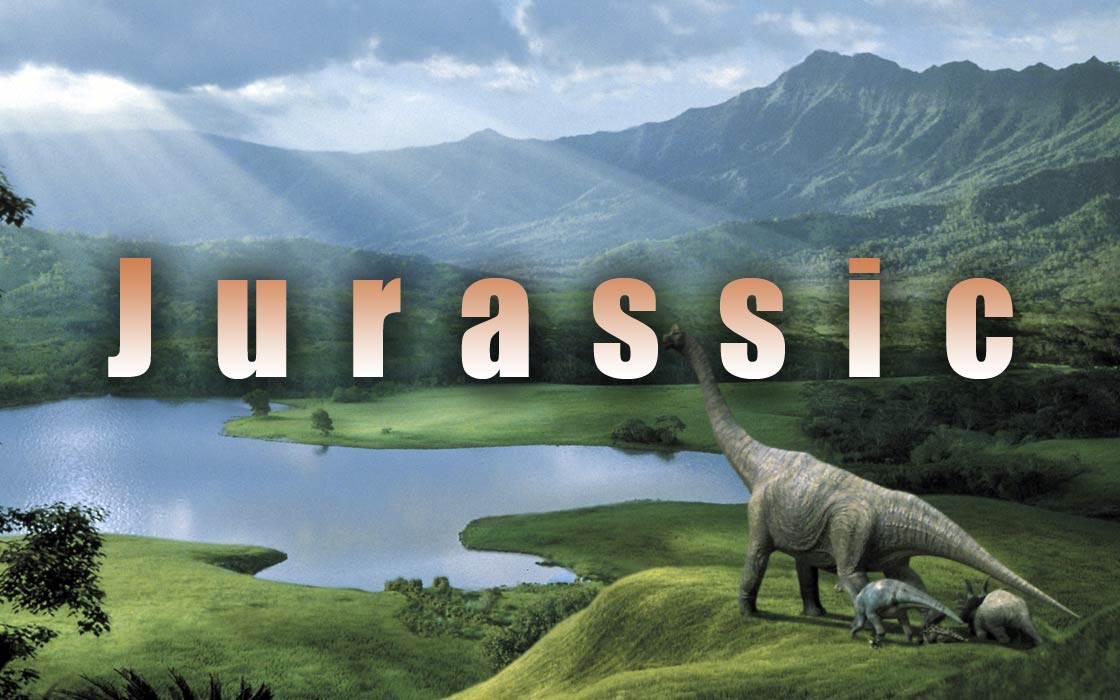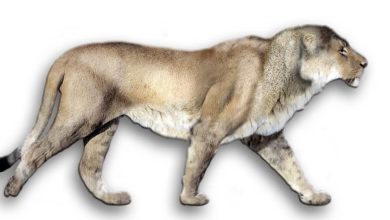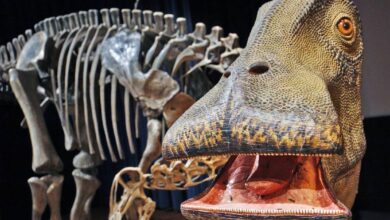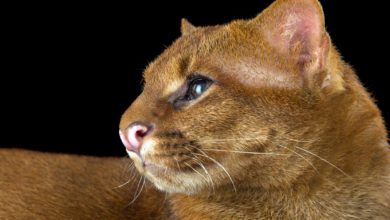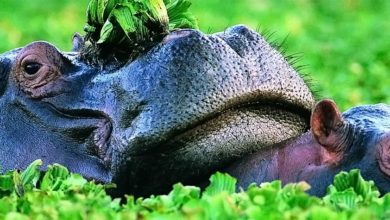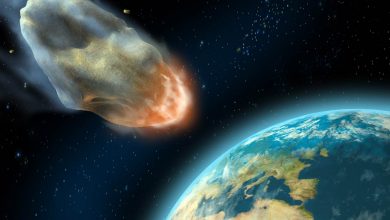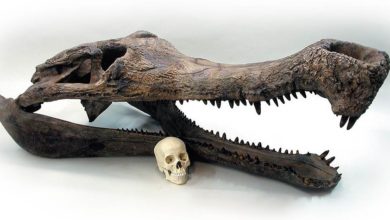Jurassic Period
Upon hearing the word “Jurassic,” most of us recall the popular movie about a dinosaur park and envision a colossal Tyrannosaurus rex (though T. rex actually lived during the Cretaceous period) or majestic herbivores. Few, however, can recall more information. First and foremost, it’s important to remember that the Jurassic is the second period of the Mesozoic Era, positioned between the Triassic and Cretaceous periods. The association with dinosaurs is indeed accurate, as this marks the beginning of what is known as the “golden age/era of reptiles.”
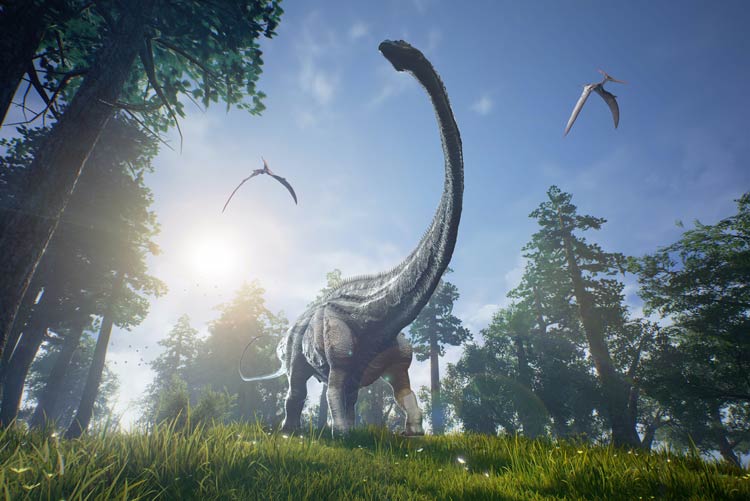
When was the Jurassic Period?
The second period of the Mesozoic Era began approximately 201.3 million years ago and lasted for about 56.5 million years, ending around 145.0 million years ago. The Jurassic Period itself is divided into three epochs:
- Early Jurassic (201.3 – 174.1 million years ago)
- Middle Jurassic (174.1 – 163.5 million years ago)
- Late Jurassic (163.5 – 145.0 million years ago)
Subdivision of the Jurassic Period
Late Jurassic (163.5 – 145.0 million years ago)
- Tithonian (152.1 – 145.0 million years ago)
- Kimmeridgian (157.3 – 152.1 million years ago)
- Oxfordian (163.5 – 157.3 million years ago)
Middle Jurassic (174.1 – 163.5 million years ago)
- Callovian (166.1 – 163.5 million years ago)
- Bathonian (168.3 – 166.1 million years ago)
- Bajocian (170.3 – 168.3 million years ago)
- Aalenian (174.1 – 170.3 million years ago)
Early Jurassic (201.3 – 174.1 million years ago)
- Toarcian (182.7 – 174.1 million years ago)
- Pliensbachian (190.8 – 182.7 million years ago)
- Sinemurian (199.3 – 190.8 million years ago)
- Hettangian (201.3 – 199.3 million years ago)
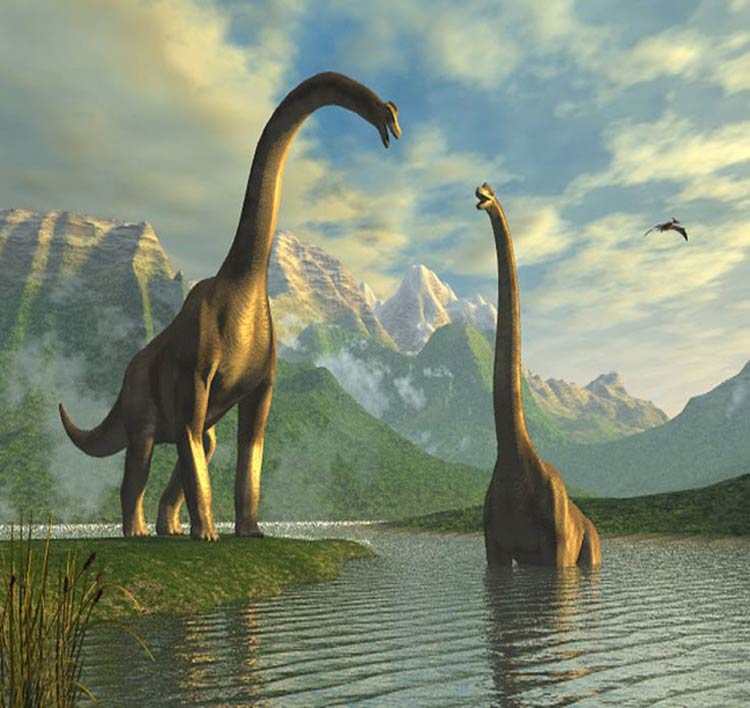
Heatwaves and Oxygen
Following the significant extinction event at the end of the Triassic Period, the climate experienced a noticeable warming trend. This extinction was most likely triggered by heightened volcanic activity, which undoubtedly impacted the climate.
The elevated temperatures, among other factors, led to a rise in ocean levels. (Research suggests there might also have been periods of falling sea levels, likely due to tectonic factors.)
During this time, the atmosphere also saw an increased concentration of oxygen, maintaining a level of approximately 26% by volume. For comparison, today’s air contains only 21% oxygen.
The amount of carbon dioxide in the atmosphere was five times higher than it is today, and seven times higher than in the pre-industrial era (before the development of industry).
The average temperature was around 16.5°C (61.7°F), which is 3°C (5.4°F) warmer than the current average.
Current composition of the air vs Jurassic period
| Component | Present-day Percentage (%) | Jurassic Period Percentage (%) |
| Nitrogen | 78.084 | ~70-73 |
| Oxygen | 20.946 | 26 |
| Argon | 0.934 | ~0.9 |
| Carbon Dioxide | 0.0411 | 0.1950 – 0.2877 |
| Neon | 0.00181 | ~0.0018 |
| Helium | 0.00052 | ~0.0005 |
| Methane | 0.00017 | ~0.00017 |
| Krypton | 0.00011 | ~0.0001 |
| Hydrogen | 0.00005 | ~0.00005 |
| Xenon | 0.000008 | ~0.000008 |
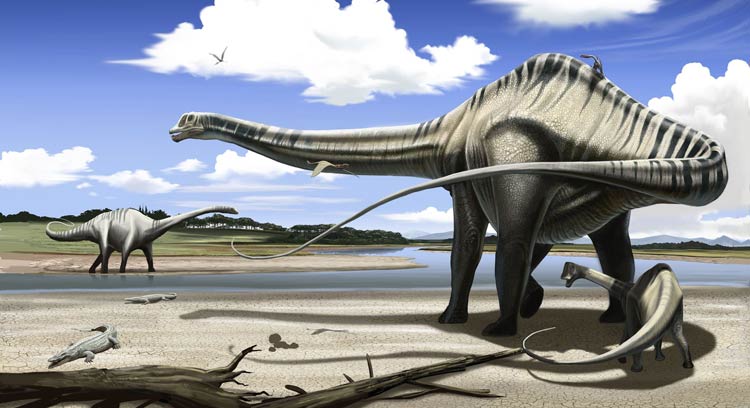
Just Hot?
Despite popular belief, it’s not accurate to definitively state that the entire Jurassic Period was uniformly hot. We’re talking about a span of over 50 million years, during which various climate changes undoubtedly occurred. While high temperatures likely dominated for most of this time, there were also periods when dinosaurs experienced cooler conditions. After the initial heatwave, triggered by volcanic activity, the climate stabilized for several million years. This normalization allowed marine fauna and flora, which had suffered the most during the Triassic extinction, to recover and flourish.
Subsequently, there were years of cooling, caused by a decrease in atmospheric carbon dioxide concentration. It’s estimated that during this time, ice caps formed at the poles. This situation could have lasted for several million years. Following this cool spell, a new wave of warmth returned, brought about by another period of increased volcanic activity.
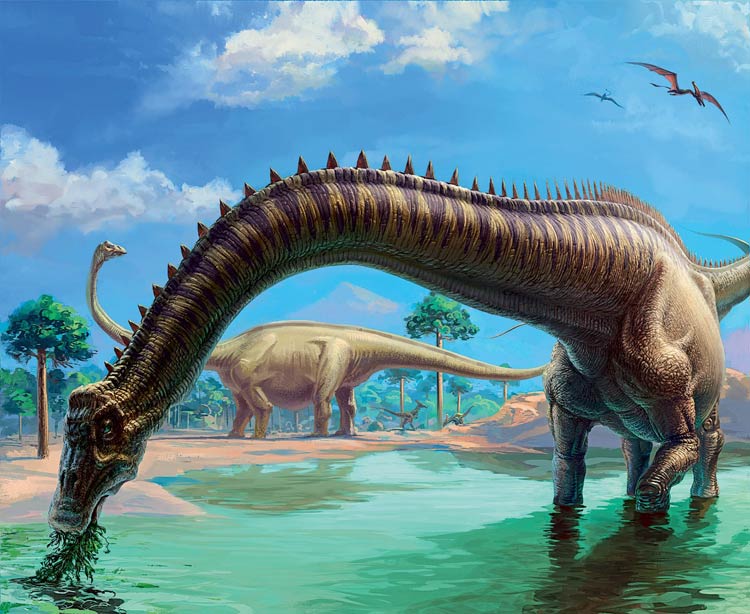
Animals of the Jurassic Period
As previously mentioned, the Jurassic Period marked the golden age of reptiles. Dinosaurs roamed the Earth in great numbers, and pterosaurs rapidly diversified. Dinosaurs virtually dominated the terrestrial landscape. By the end of the Jurassic, the largest known predatory dinosaurs of that period were alive, such as Allosaurus (which research suggests could reach up to 12-13 meters [39-43 ft] in length, with an average individual being around 9 meters [30 ft] long) and Saurophaganax.
Many creatures from this period exhibited gigantism. There were also numerous smaller predatory dinosaurs. Ornithischian dinosaurs (bird-hipped dinosaurs) were very common, though they hadn’t yet reached their peak diversity or specialization.
Towards the end of the Jurassic, the first Archaeopteryx appeared, which is most likely an evolution of small predatory dinosaurs. Many scientists agree that the emergence of Archaeopteryx should be considered the beginning of birds on our planet. On land, one could also encounter small mammals that had already developed homeothermy (warm-bloodedness), but they were still relatively undeveloped.
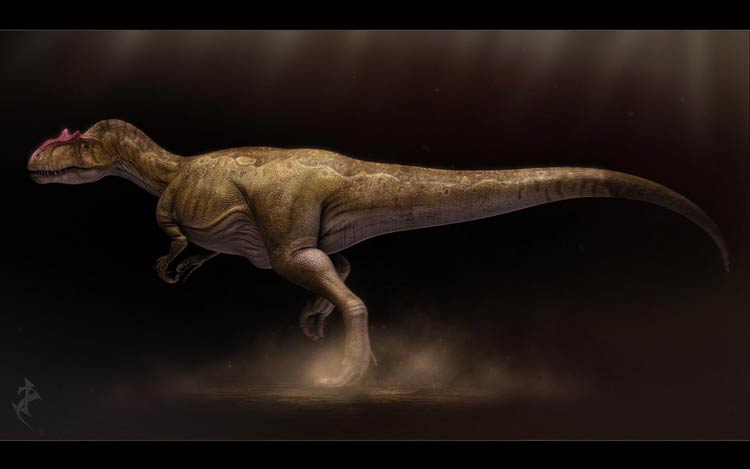
The Golden Era of Sauropods
The Jurassic Period was indeed the golden age for large herbivorous dinosaurs – the sauropods. Giants like Camarasaurus, Apatosaurus, Diplodocus, and Brachiosaurus, among many others, roamed the Earth towards the end of the Jurassic. These colossal creatures grazed across prairies filled with ferns, palms, cycads, and tall coniferous trees.
Smaller Dinosaurs
Smaller herbivorous dinosaurs, such as stegosaurs and small ornithopods, were less dominant in the overall ecosystem, yet played important roles. They often became prey for large theropods like Ceratosaurus, Megalosaurus, Torvosaurus, and Allosaurus.
During the Late Jurassic, the first birds, such as Archaeopteryx, evolved from small coelurosaurs (Coelurosauria).
In the air, pterosaurs were common, ruling the skies. The largest among them had wingspans of several meters (several yards) – for more, see “Largest Pterosaurs.” Underground, various types of early mammals and early amphibians also lived.
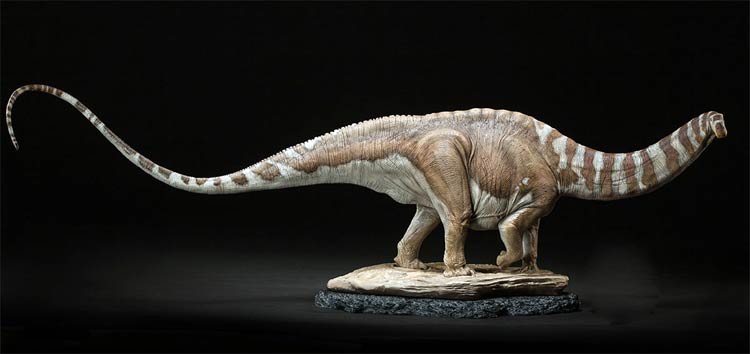
What’s Happening in the Ocean Depths?
After the mass extinction at the end of the Triassic, significant changes occurred in the oceans. While some species vanished, new ones emerged. The first belemnites (extinct marine cephalopods) appeared and diversified relatively quickly.
Planktonic foraminifera also began to inhabit the ocean depths. Sponges, cyanobacteria, and algae also saw significant development, leading to the formation of large, reef-like structures. Bivalves and brachiopods became increasingly abundant. Crinoids (a type of echinoderm) even reached lengths of up to 20 meters (65.6 feet).
Marine predators thrived. Sharks evolved rapidly, and the first rays appeared. The waters were also home to pliosaurs, gigantic marine reptiles. It was during the Jurassic Period that the Liopleurodon proudly swam through the seas and oceans (interestingly, this creature was most likely viviparous, meaning it gave birth to live young).
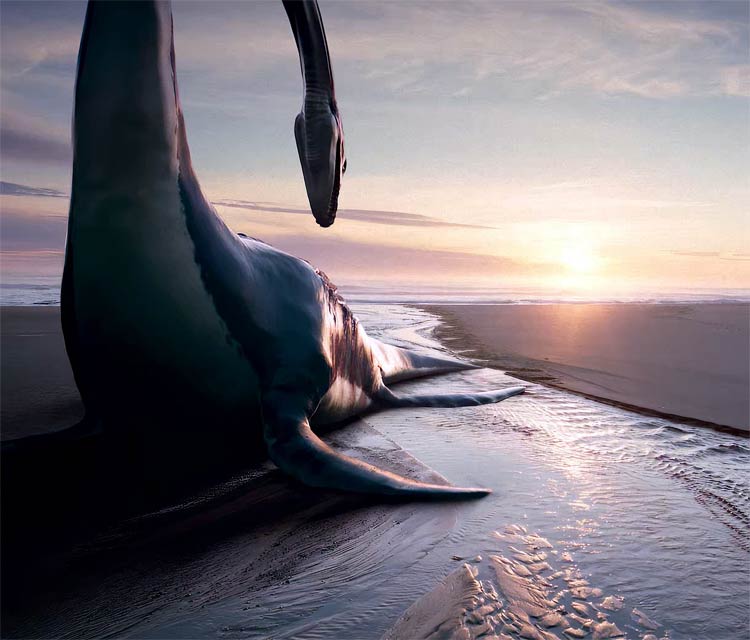
The First Jungles?
High temperatures, fueled by volcanic activity, certainly favored the formation of jungles. However, Jurassic forests were nothing like today’s Amazon rainforest. Instead, they featured cycads, coniferous trees, and ginkgoes. These were still primarily gymnosperms, relying on wind for pollination.
There was a rapid diversification of Araucariaceae trees (conifers made up the majority of all terrestrial flora at the time). Pine and yew plants also emerged. While clubmosses and horsetails were much rarer than in the Triassic, ferns were still common (though most were now-extinct seed ferns). You could also find gigantic tree ferns.
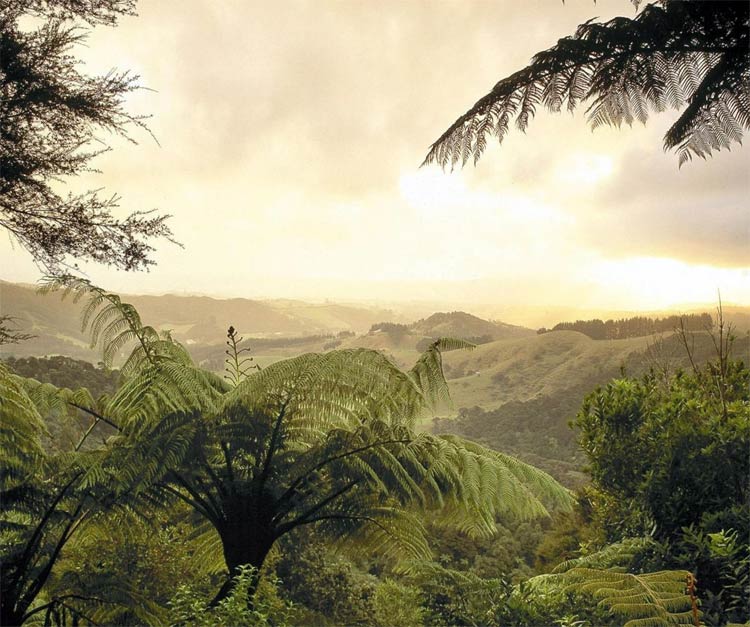
Slow Demise of Pangea
The supercontinent Pangea slowly began its fragmentation. The initial shifts signaling the inevitable end of this single, colossal landmass appeared by the close of the Triassic Period. However, the majority of the landmasses still remained part of this monstrous formation.
From the dawn of the Jurassic Period, a noticeable increase in volcanic activity was evident. This was directly linked to the tectonic movements responsible for the continent’s breakup. The Atlantic Ocean began to form during the Jurassic; the rift valley present in the Triassic was replaced by the expanding central part of what is now the Atlantic Ocean, separating Africa and North America.
Peripheral water bodies and the Tethys Ocean also widened. Additional rift valleys emerged, leading to the creation and expansion of more water basins. Eventually, South America broke away from Africa, Europe detached from North America, and the Tethys Ocean was poised to permanently separate the Americas. All these movements were the genesis of the continental configuration we see on our globe today.
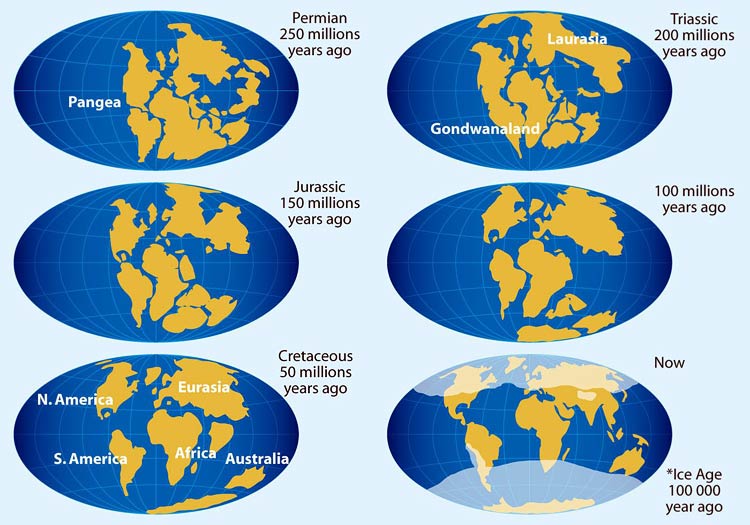
Stratigraphic table of Mesozoic era
| Era | Period | Epoch | Age | Years ago |
| Mesozoic | Cretaceous | Late Cretaceous | Maastrichtian | 66 043 000 – 72 100 000 |
| Campanian | 72 100 000 – 83 600 000 | |||
| Santonian | 83 600 000 – 86 300 000 | |||
| Coniacian | 86 300 000 – 89 800 000 | |||
| Turonian | 89 800 000 – 93 900 000 | |||
| Cenomanian | 93 900 000 – 100 500 000 | |||
| Early Cretaceous | Albian | 100 500 000 – 113 000 000 | ||
| Aptian | 113 000 000 – 125 000 000 | |||
| Barremian | 125 000 000 – 129 400 000 | |||
| Hauterivian | 129 400 000 – 132 600 000 | |||
| Valanginian | 132 600 000 – 139 800 000 | |||
| Berriasian | 139 800 000 – 145 000 000 | |||
| Jurassic | Late Jurassic | Tithonian | 145 000 000 – 152 100 000 | |
| Kimmeridgian | 152 100 000 – 157 300 000 | |||
| Oxfordian | 157 300 000 – 163 500 000 | |||
| Middle Jurassic | Callovian | 163 500 000 – 166 100 000 | ||
| Bathonian | 166 100 000 – 168 300 000 | |||
| Bajocian | 168 300 000 – 170 300 000 | |||
| Aalenian | 170 300 000 – 174 100 000 | |||
| Early Jurassic | Toarcian | 174 100 000 – 182 700 000 | ||
| Pliensbachian | 182 700 000 – 190 800 000 | |||
| Sinemurian | 190 800 000 – 199 300 000 | |||
| Hettangian | 199 300 000 – 201 300 000 | |||
| Triassic | Late Triassic | Rhaetian | 201 300 000 – 208 500 000 | |
| Norian | 208 500 000 – 227 000 000 | |||
| Carnian | 227 000 000 – 237 000 000 | |||
| Middle Triassic | Ladinian | 237 000 000 – 242 000 000 | ||
| Anisian | 242 000 000 – 247 200 000 | |||
| Early Triassic | Olenekian | 247 200 000 – 251 200 000 | ||
| Induan | 251 200 000 – 251 902 000 |
Recommended
- Pangaea (Pangea)
- Gondwana
- Triassic Period
- Jurassic Period
- Cretaceous Period
- Mass Extinction
- History of animals and plants extinction
- Extinction of dinosaurs. Why are they extinct?

